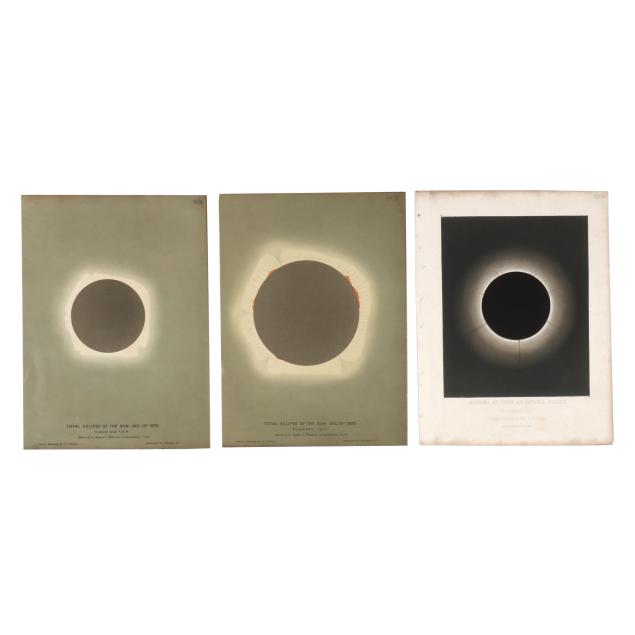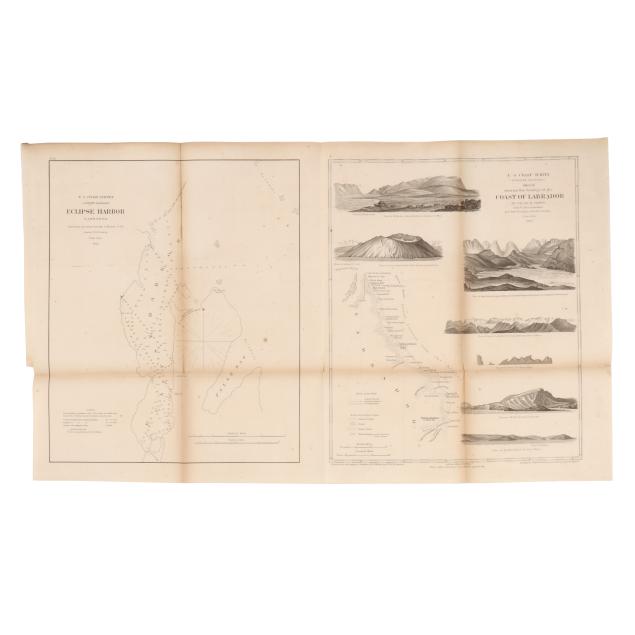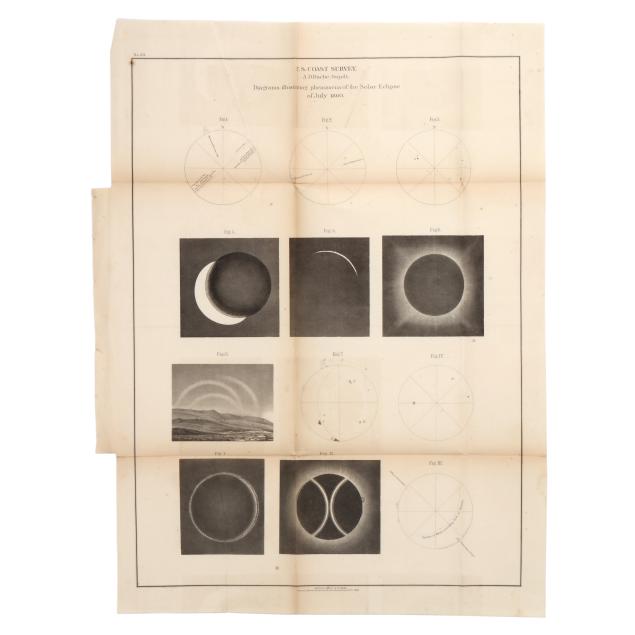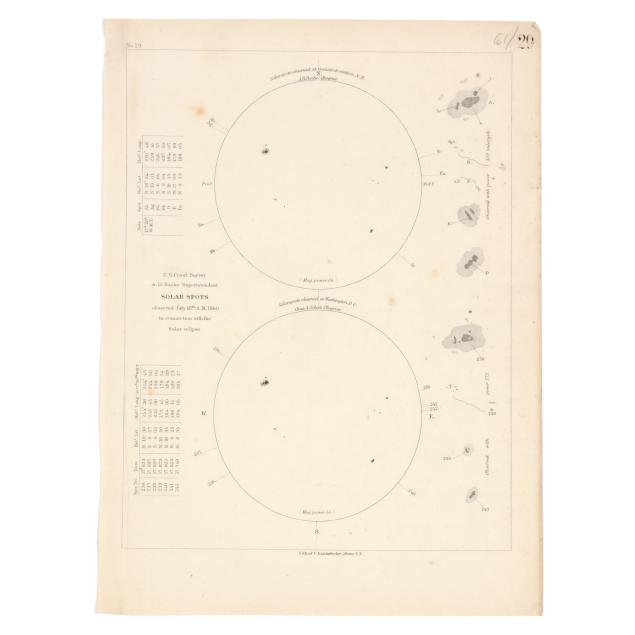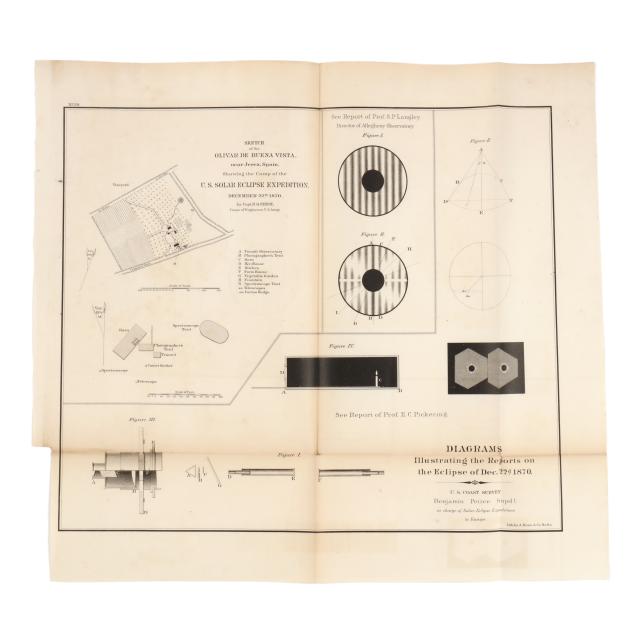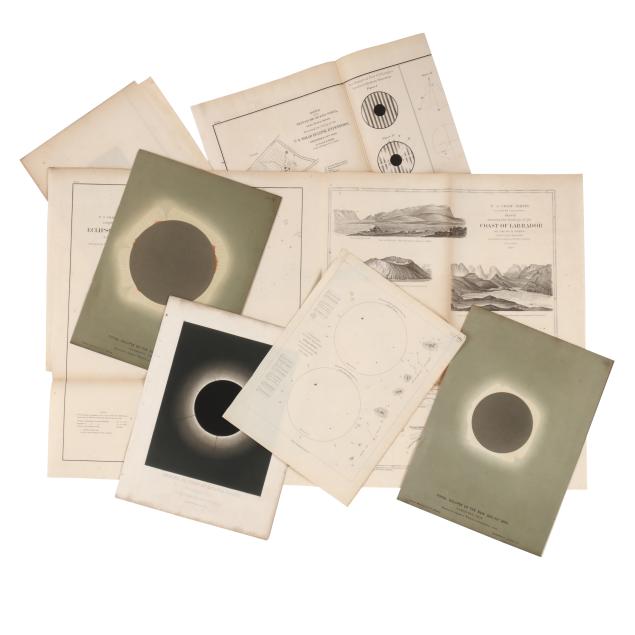
Lot 4031
Group of Materials Related to the U.S. Government Eclipse Expeditions of 1860 and 1870
Explore more items like this one.
Visit our Historical Department Historical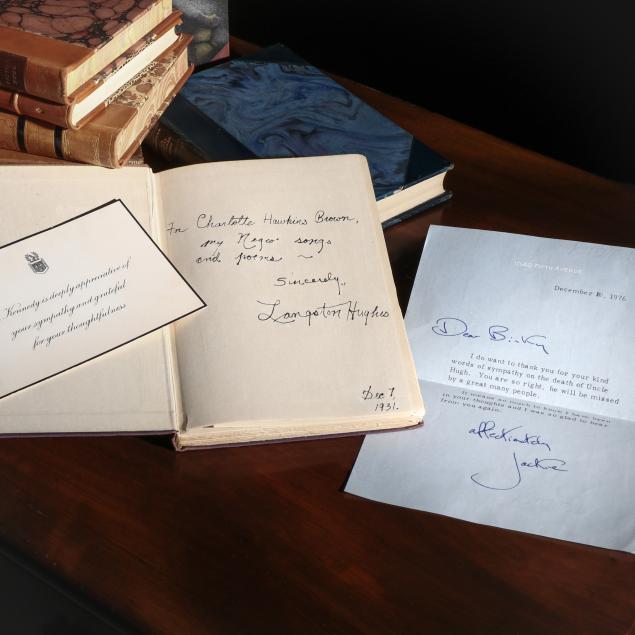
Lot Details & Additional Photographs
"TOTAL ECLIPSE OF THE SUN, DEC. 22D. 1870. / NAKED EYE VIEW. / Observed by James C. Watson at Carlentini, Sicily." Crayon drawing by J. C. Watson and Chromolithograph by Jul. Bien, NY. (11 1/8 x 8 1/4 in.)
"TOTAL ECLIPSE OF THE SUN, DEC. 22D. 1870. / TELESCOPIC VIEW. / Observed by James C. Watson at Carlentini, Sicily." Crayon drawing by J. C. Watson and Chromolithograph by Jul. Bien, NY. (11 1/8 x 8 1/4 in.)
"CORONA AS SEEN AT CATANIA, SICILY. / DECEMBER 1870 / From a Sketch by Mrs. Z F. Peirce." Lithograph by Suffords Sons, Boston. (11 1/8 x 8 1/2 in.)
U.S. Coast Survey, one folded sheet with map of Eclipse Harbor, Labrador, 1860 on the left and "Sketch showing the Geology of the Coast of Labrador" by Oscar M. Lieber, 1860 on the right. (16 3/4 x 28 1/2 in.)
U.S. Coast Survey, one folded sheet with "Diagrams illustrating phenomena of the Solar Eclipse of July 1860." (24 3/8 x 18 1/2 in.)
U.S. Coast Survey, one sheet with "SOLAR SPOTS observed July 18th A.M. 1860 in connection with the Solar eclipse." (11 x 8 1/4 in.)
U.S. Coast Survey, one folded sheet with "Sketch of the OLIVAR DE BUENA VISTA, near Jerez, Spain. Showing the Camp of the U.S. SOLAR ECLIPSE EXPEDITION, December 22nd. 1870" by Captain H. O. Ernst, with "DIAGRAMS Illustrating the Reports on the Eclipse of Dec. 22d. 1870. (16 1/4 x 14 5/8 in.)
Private North Carolina Estate
James C. Watson was an astronomer who joined several different U.S. government expeditions, including the 1870 expedition to observe the solar eclipse in Sicily. Ten years earlier, the U.S. Coast Survey was authorized to send astronomers to Labrador to study the total solar eclipse that occurred on July 18th.
Good estate condition; three lithographs with scattered foxing, light toning, and occasional creasing, edge wear, closed tear, or chip, each numbered in pencil; the first two with corner stain on verso, and the third with small holes mostly along one edge; folded sheets generally with all-over toning with heavier toning at folds, light scattered foxing, and occasional small tear, creasing, offsetting, minor edge wear, and uneven trimming; sheet with diagrams with (2) small repairs on verso.
